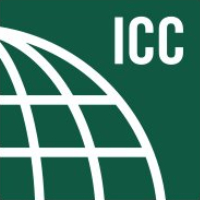
Significant changes to the 2018 I-Codes
The 2018 Significant Changes guides are available for the International Building, Residential, Fire, Plumbing, Mechanical and Fuel Gas Codes. This valuable series can help any code user save time by zeroing in on the most critical changes in the 2018 International Codes (I-Codes). The Code Council’s technical experts provide summaries, analysis and graphics for these changes making them clear and easy to understand.
2018 International Building Code
An addition to Section 1010.1.4.4 (Locking Arrangements in Educational Occupancies) states that guidance has been provided to allow for enhanced security measures on educational classroom egress doors and yet still continue to comply with applicable means of egress requirements. A high priority in educational facilities is the safety of occupants while in classrooms and other occupied spaces during the event of a threatening situation. It is important that the International Building Code provides criteria which balance the challenges of providing protection for students and teachers in the classroom and at the same time provide for free and immediate egress.
Oftentimes locks or devices are added to doors to provide security, but they do not allow free egress, or comply with the single operation requirement. The new provisions provide guidance for combining security while maintaining safe egress capabilities. Door locksets with some type of “classroom security function” are readily available at a comparable cost to the traditional “classroom function” door locksets. Additionally, this language requires that the door shall be unlockable from outside the classroom. This allows for school personnel, law enforcement and emergency responders to obtain entry even after the door is locked from the inside. This can be accomplished at the door with a key, or other approved means, including remotely as permitted in Section 1010.4.4.1.
Click here to read the full significant change.
2018 International Fire Code
A modification to Section 1031.10 (Inspection and Testing of Emergency Egress Lighting) states that inspection and testing requirements for emergency egress lighting are relocated into Chapter 10 (Means of Egress) and revised to allow self-diagnostics.
This change moves requirements for emergency lighting equipment inspection and testing from the general emergency and standby power requirements of Chapter 6 to the means of egress requirements in Chapter 10 where it more logically is found. Additional changes recognize modern technology found in many emergency lighting units, including self-testing and self-diagnostics to replace manual testing. Conditions for the annual requirement of a 90-minute duration test have been clarified so the test can occur without having to disconnect normal premises power. Finally, by referring users to International Fire Code Section 108 (Maintenance), record-keeping requirements are made consistent with the remainder of the fire code.
Click here to read the full significant change.
2018 International Residential Code
A modification to Table R703.8.4(1) (Airspace Requirements) states that the new footnote “c” in Table R703.8.4(1) allows drainage airspace to contain some mortar spills.
The new footnote acknowledges that the required airspace behind brick veneer will never be completely devoid of mortar. Some spillage of mortar occurs as part of the installation. The air space, along with the water-resistant barrier, flashing and weep holes, provides a drainage system to keep the backing and stud walls dry and direct water to the exterior surface.
Historically, architects, engineers, code officials and building owners have recognized the difference between brick veneer with a code-compliant airspace with limited amounts of mortar spillage and one that is blocked by mortar. However, veneer airspace previously deemed acceptable has been incorrectly called into question during litigation after the building has been occupied and is experiencing water damage or drainage issues not associated with the brick veneer system. This clarification explicitly acknowledges that the airspace may contain some mortar from construction as long as the airspace provides drainage.
Click here to read the full significant change.
2018 International Plumbing Code
A clarification to Section 405.3.1 (Clearance of Plumbing Fixtures to Obstructions) states that the minimum distances from a fixture’s centerline to other fixtures or obstructions is clarified.
The first change in the section simply breaks up a long sentence to clarify the requirements. The new exception recognizes that for accessible children’s water closets, the minimum distance allowed by this section must be decreased. Standard A117.1 allows the location of such water closets to be as close as 12 inches from their center to a wall or partition.
Click here to read the full significant change.







